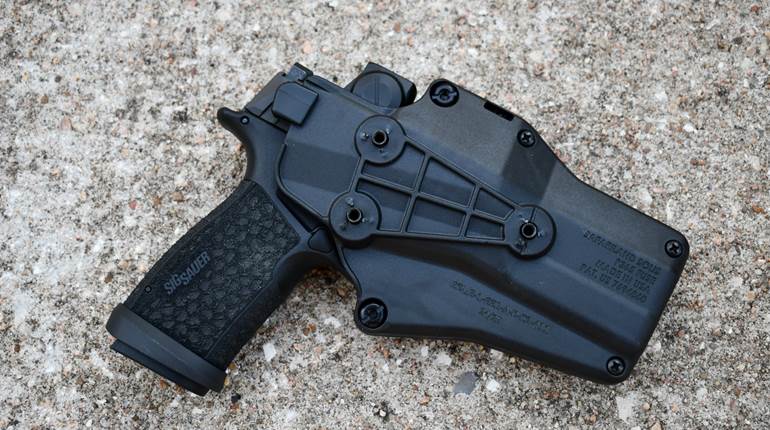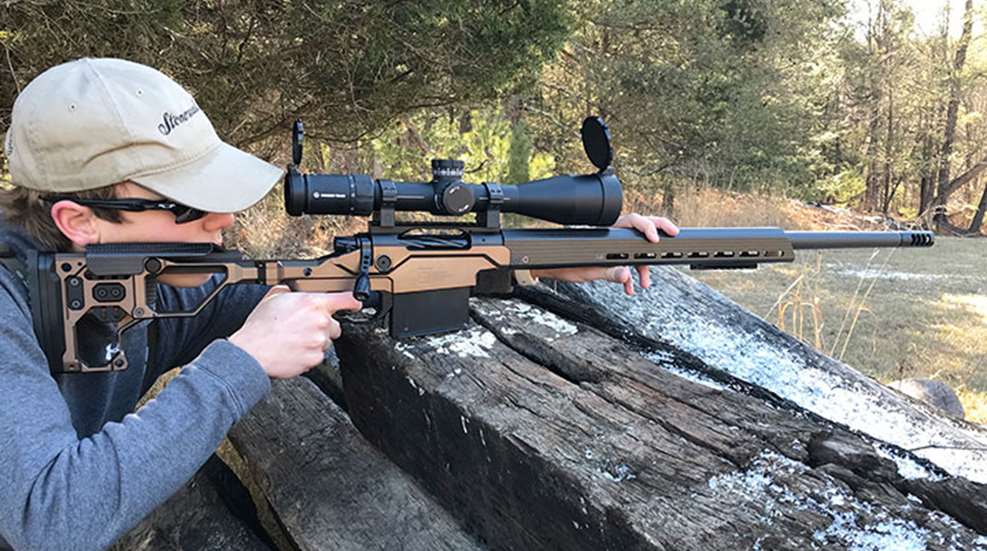
Christensen Arms has a new take on the precision bolt-action platform as embodied by the Modern Precision Rifle (MPR) chambered in .300 Win. Mag. The same Christensen Arms quality and attention to detail in providing highly accurate, rugged and reliable bolt action hunting rifles was turned toward improving the precision chassis-based bolt action. Christensen has chosen to go a different path with the MPR by balancing accuracy, weight and enhanced cartridge capability compared to typically heavy chassis rifles.
One overarching theme with Christensen Arms, stemming from its carbon-wrapped barrels, is keeping weight down to maximize user efficiency. The desirable characteristics for a precision bolt-action rifle are cold-bore zero, repeatable accuracy, effective range, reliability and handling. Whether it be competition, hunting or tactical orientation, there can be no compromise in terms of consistent accuracy. The precision realm is a demanding environment for a rifle.
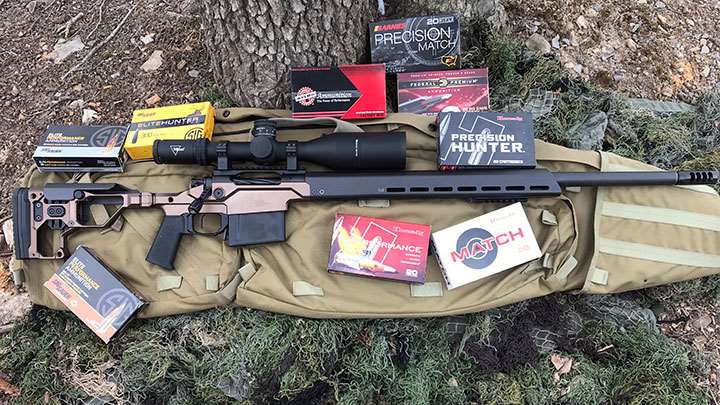
Christensen is known for its innovative approach in maximizing firearm performance. Much of this stems from Christensen’s non-typical background, associated with founder Dr. Christensen and his other endeavors, including aerospace manufacturing. The Christensen MPR is the cutting edge of bolt-rifle technology, combining many innovative features with accuracy enhancements. The MPR’s distinctive aesthetics immediately puts one on notice that this is not an ordinary rifle.
The Christensen bolt action is constructed of high-strength 17-4 stainless steel, making it 1.5 times stronger than most receivers. Extraction is accomplished by an AR-15-style extractor. This is superior to the typical steel clip that sits inside the bolt nose of most non-Mauser style bolt-action rifles. Dual ejectors are used on the .300 Win. Mag. bolt for improved clamp pressure on the large cartridge.
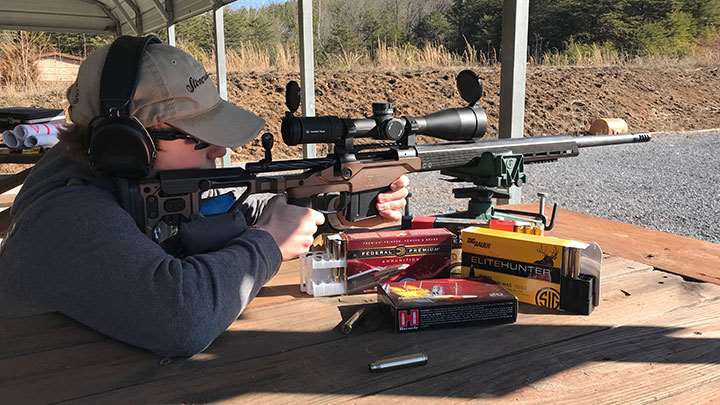
The Christensen bolt is conducive to long-range accuracy due to its rigid design and high-quality control during the manufacturing process. The bolt is nitride-coated at 70 HRC for extreme wear protection. The MPR receiver has an integrated 20-MOA Picatinny rail on top for mounting optics. Christensen chose to use a chassis to house the MPR’s receiver and support the 26” barrel. It uses carbon fiber in the right places, with a hardcoat-anodized 7075 billet aluminum frame making up the rest.
The whole chassis weighs only 3.5 lbs. The Christensen chassis features a side-folding buttstock for decreased length during transport. The stock is held in place when extended by specially placed magnets, eliminating need for hooks or other snag-inducing devices. The chassis offers a rock-solid backbone to the MPR and is specifically set up for long-range shooting. The chassis reinforces the receiver like a sleeved benchrest rifle.
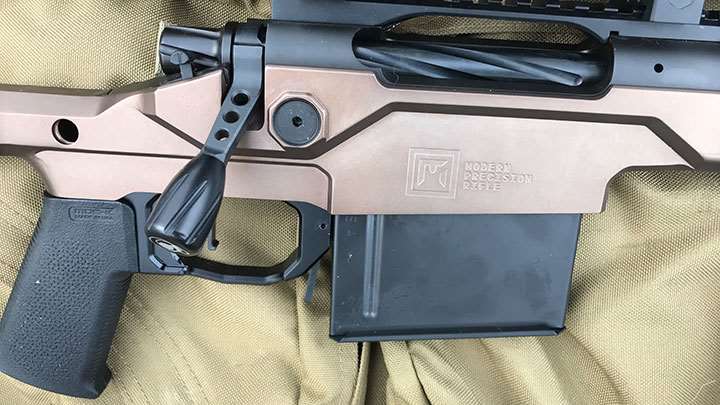
The flat carbon-fiber fore-end handles either bipods or sandbags well, depending on user preference. A Picatinny rail section is under the MPR’s fore-end for mounting of a bipod or other accessories. However, it is not exclusively designed for use from the supported, prone or bench position. The MPR allows for off-hand and other types of supported fire, if needed. Unlike most chassis rifles, especially magnums featuring 26” barrels, it is feasible to consider using the Christensen from positions other than prone.
This is what makes the MPR so attractive for use in multiple roles, with the burgeoning precision-rifle genre as an example. The ergonomics of the stock allows for a comfortable, repeatable cheek weld combined with optimal hand placement for pulling the Match-Grade Trigger Tech “Flat” trigger precisely rearward. The MPR uses AICS-style detachable box-magazines. The detachable single-column magazines have a five-round capacity.
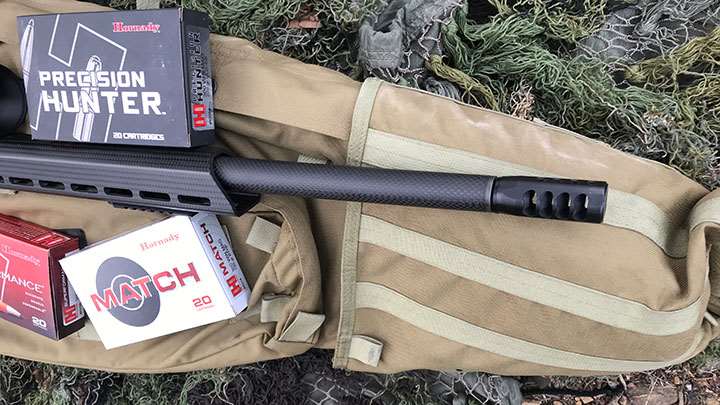
The carbon-fiber wrapped 26” 416R stainless steel barrel is backed by Christensen Arms with a sub-MOA guarantee. A radial stainless-steel muzzle brake is threaded on the barrel, which has 5/8”x28 TPI threads. The MPR chambered in .300 Win. Mag. weighs only 8.4 lbs. Everyone who picked it up maked the same surprised face, expecting a much heavier rifle based on aesthetics and prior experiences. A precision rifle’s accuracy depends on many factors, including the specific rifle, optics and ammunition being used, as well as the skill of the user.
For most of this evaluation, a Crimson Trace (CTC) CTL-3525 3-Series Tactical 5-25x56 mm optic was mounted to the upper receiver rail with 34 mm Talley rings. Talley Tactical Rings are machined from solid 7075 T6 aluminum alloy and are match-grade in terms of tolerances. The Crimson Trace 5-25x features Japanese ED glass for long-range clarity. The CTC designed MR1-MIL advanced reticle is fully illuminated and offers quick holdover points for windage and elevation.
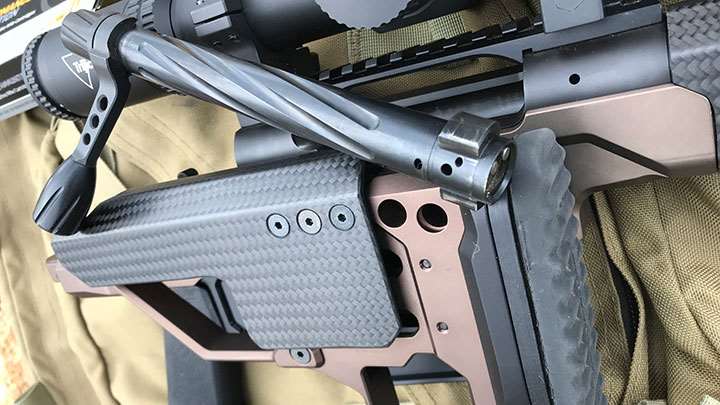
Exposed tactical turrets provide a precise feel when dialing. The entire Crimson Trace scope line offers EZ Mount Leveling Indicators for quick mounting and a red alignment ring for proper eye placement. The Crimson Trace 3-Series 5-25x56 mm is an excellent companion for the Christensen MPR. In my opinion, the Crimson optic is one of the best-value scopes on the market.
Ammunition used for testing the Christensen MPR consisted of .300 Win. Mag. Black Hills Match 190-gr. BTHP, Federal Premium 190-gr. Matchking and 180-gr. Accubond, SIG Suser Elite Hunter 180-gr. CET and 165-gr. Elite Copper, Hornady 180-gr. GMX, 200-gr. ELD-X, 195-gr. BTHP and Barnes 220 gr. OTM/BT loadings. Prior use of these loads in other tests indicated that they might work well. The Christensen MPR shot all the premium loads tested at 1 MOA or better at 100 yds.
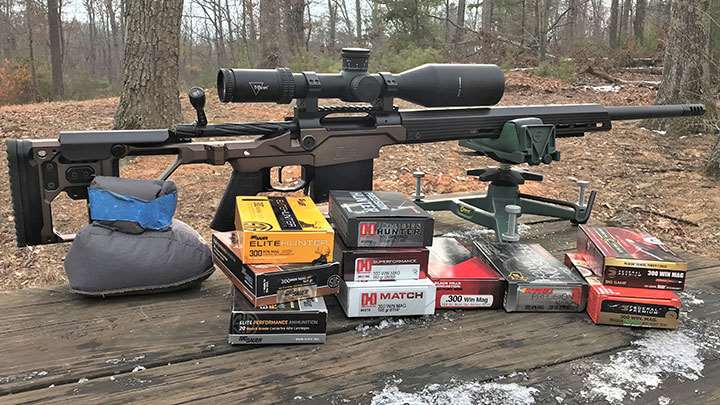
It grouped noticeably better with the SIG Sauer 180-gr. Elite Hunter, generating near .625” groups. The bench testing was done from a Caldwell tripod front-rest and rear sandbag. Not a lot of time was spent at the 100-yd. range. The 300-yd. range and out is a more telling test for a rifle like the MPR. Firing a longer distance generates useful ballistic information, especially when it comes to elevation and windage data for logbooks and ballistic calculations.
The MPR’s accuracy at 300 yds. were m.o.a. or better. Another test of an accuracy on a rifle is how cold-bore zeros compare over time and if the point-of-aim shifts after a few rounds heat up the barrel. The Christensen MPR showed no shifts in point-of-aim and cold-bore zeros produced fine groups when overlaid together. After testing accuracy from the bench, field tests were performed at Echo Valley Training Center (EVTC).
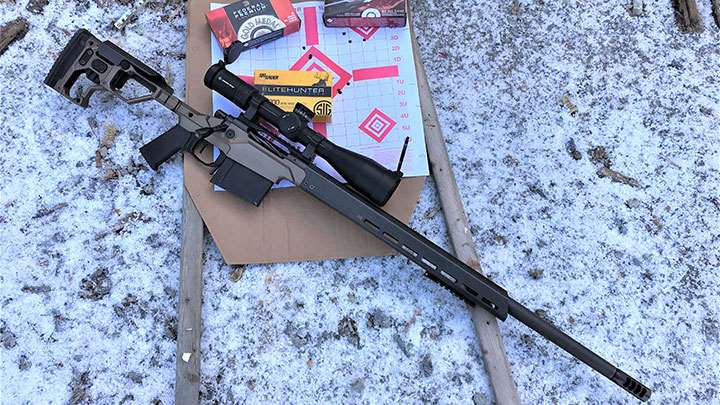
This consisted of shooting prone off a bi-pod or pack from EVTC’s fixed-firing positions overlooking a multi-stepped berm arrayed with various targets. Field tests were performed consisting of shooting at clay pigeons at 300 yds. We worked the bolt vigorously and acquired the next target as quickly as possible. The Christensen brake combined with the ergonomic stock made repeat shots comfortable and controlled. Other range test consisted of shooting B-27 man-sized targets out to 675 yds.
The Christensen MPR’s accuracy combined with the Crimson Trace optic made center-mass shots repeatable and precision shots feasible on the stationary targets. The MPR is relatively lightweight for a precision rifle. This translates into a platform that can be carried at the shoulder without fatiguing the user and is easier to adapt to non-standard firing positions, even offhand, if needed. Rifles weighing significantly more than the MPR have been used the same way successfully.
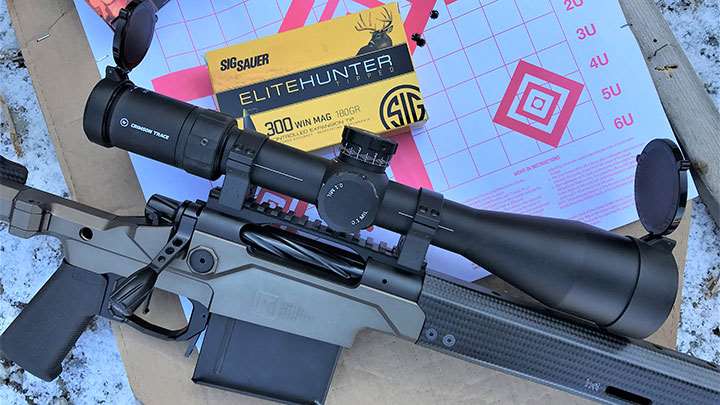
The 26” barrel is a solid compromise balancing weight, velocity performance and field handling for the precision marksman. The MPR had no problems with shifting points-of-aim, even when firing 10 aimed rounds in relatively rapid fashion. Let’s face it, most scenarios will not require this many rounds fired in a continuous fashion. The MPR can be single-loaded if the magazine runs dry and there isn’t enough time available to top off the magazine.
After firing more than 200 rounds, the MPR’s ergonomics came to be fully appreciated. The radial muzzle brake is very effective at taming recoil. While not measured by scientific instruction, the lightweight .300 Win. Mag. MPR felt like a .270 Win. The brake was quite effective allowing for quick follow-up shots. If one was in a stable shooting position, spotting one’s own round was possible. This makes it easier to fire multiple rounds accurately and quickly. The MPR’s oversized bolt handle further supported the ability to fire aimed rounds in quick succession based on spotter feedback or in a target-rich environment.
The MPR chambered in .300 Win. Mag. provides a ballistic advantage over most other chamberings. The .300 Win. Mag. fills the gap between the .308 Win. and .338 Lapua, with many feeling it is the optimum chambering by offering extra power compared to the .308 Win. without the blast and recoil of the .338 Lapua. The .300 Win. Mag. in such an accurate platform as the Christensen MPR can extend accurate fire beyond 1,000 yds. The Christensen MPR in .300 Win. Mag. should prove a popular rifle for the magnum-cartridge crowd.














